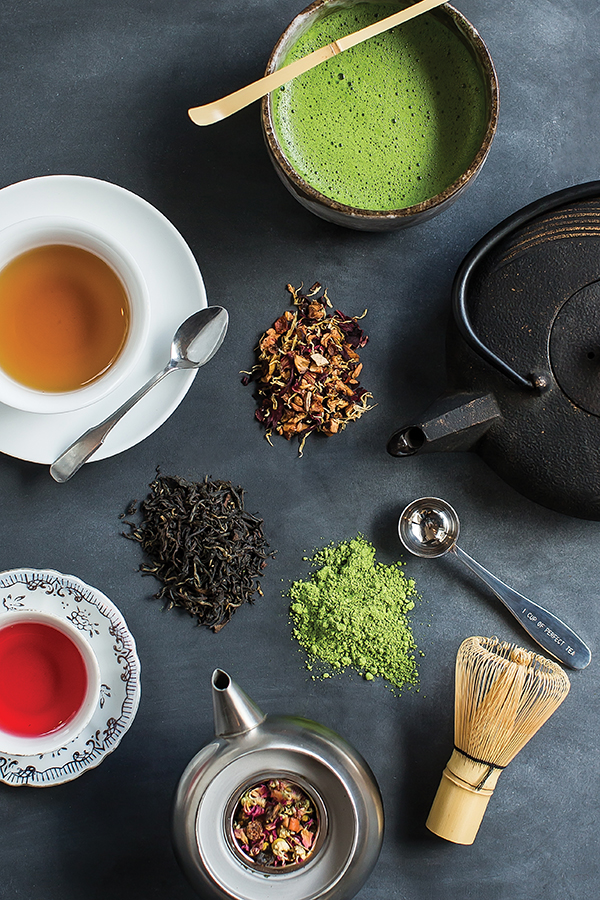Small packages of locust husks hang next to wasp nests at Chan Fat Herb Store. “How do you prepare these?” I question the lady at the cash register. “You boil them and then drink the water,” she says.
“So, would that be a type of tea?” I ask. “Well, yes … but not really,” she says. “Now, those are definitely teas,” she says, pointing to a row of green, pu’erh and oolong teas.
Tea, in the strictest sense of the word, says Cally Slater-Dowson, owner of Cally’s Tea, comes from the plant camellia sinensis, an evergreen shrub. It’s the preparation of the leaves that results in the many varieties lining shops like Cally’s. Tea leaves are oxidized – the enzymes in the leaves are bruised or crushed, which exposes them to oxygen for varying amounts of time, depending on the variety.
In the case of white and green teas, the leaves are picked in the morning and often prepared that night with little to no oxidation (resulting in less caffeine) whereas with black tea, they’re left to oxidize until very dark. Generally, green tea has a lighter, grassy and sometimes astringent flavour that can be fruitier or smokier depending on the variety. Green tea is subtler than the sweet, strong black tea. Meanwhile, white tea is generally even subtler than green tea, leaving a lingering sweetness. Black tea can hold its own alongside a meal, while the gentle mouth feel of white might be your post-dinner cup of tea.
But the differences between teas don’t end there – cultures worldwide grade the leaves based on whether they’re intact (the more intact, the better), where the plant grows (the higher the elevation, the better), what part of the leaf is used (the buds and youngest leaves are best) and the time of year the leaves are picked (spring is often considered best). “In the past four years, there’s been a demand for higher end teas, estate teas,” says Anna Somerville of Acquired Taste Tea.
